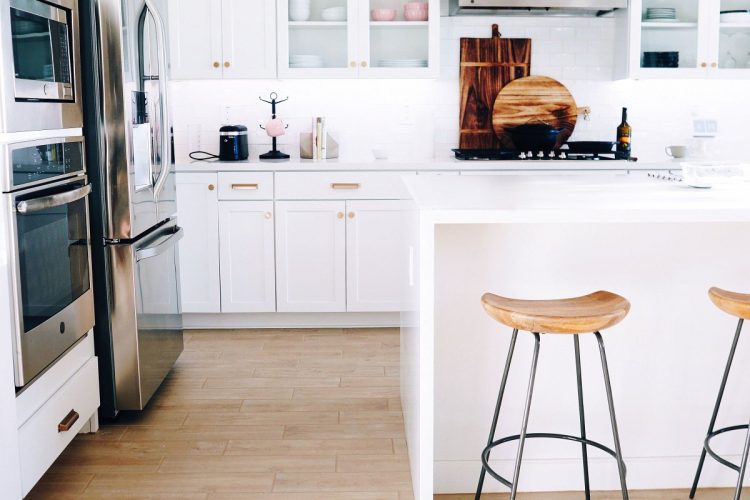As major disasters continue to ravage the planet and expose the fragility of our environment, more people than ever before are committing to a more sustainable lifestyle. One study indicates that more than three-quarters of people in the U.S. and Australia want to learn how to diminish their negative impact on the environment and increase their positive effects.
On a practical level, people have taken up a variety of sustainable actions to help lessen their impact, including:
- Recycling
- Reducing your need for single-use plastics
- Avoiding harsh cleaning products that may contaminate local waterways
- Driving more fuel-efficient vehicles.
This shift toward sustainability is also extending into interior design. Sustainable interior design does more than help the environment, though. In an era of rapidly increasing costs, making eco-friendly design choices can potentially reduce your expenses — including your homeowner’s insurance premiums.
Some insurance companies offer discounts to policyholders who choose sustainable products or make “green” choices like paperless billing. Insurance companies also can provide green discounts for eco-friendly material replacements and becoming green certified, such as a LEED certification.
If you want to save money and the planet but you aren’t sure where to start, try some of these ideas. Even if you aren’t ready for a home makeover, starting small can lead to big results.
Install Energy-Efficient Appliances
Replacing old appliances with new energy-efficient models is one of the easiest ways to improve your home’s sustainability. Energy-efficient refrigerators, washers and dryers, air conditioners, and other appliances use less electricity, cutting your monthly bills.
They can also reduce pollution, improve energy security, and help future-proof your home. Using less electricity now helps ensure there will be enough power in the future.
When shopping for new appliances, look for models with the Energy Star rating. These typically exceed federal standards for energy efficiency and quality. The black and yellow EnergyGuide labels on appliances show an estimated cost operation, helping you compare options.
You might also look for smart appliances, which have features that connect to a home energy management system or smart grid. These appliances automatically adjust their operation to ensure the most efficient use of resources. For example, a water heater might only run when there is low demand on the energy grid and rates are lowest.
Use Space Efficiently
Space planning is a crucial aspect of sustainability. Bigger isn’t always better when it comes to home design — especially sustainable home design. Smaller homes require fewer construction materials and use fewer resources than larger structures.
Living in a smaller home requires maximizing the space you have. Using vertical space, for example, is a tried and true method for getting the most from a small footprint, but consider other ways you can live comfortably with less square footage.
Built-in features like pull-down Murphy beds, for example, allow rooms to do double duty — eliminating the need for extra bedrooms. Utilize space that would otherwise be wasted; for example, stalling shelves or drawers underneath stairs increases storage without adding more space.
Install Water-Saving Appliances
In addition to saving electricity, look for appliances that conserve water. Reducing water usage helps preserve the water supply and keeps rivers, lakes, and streams healthy. It also reduces wastewater treatment, which in turn cuts energy consumption and air pollution.
EnergyStar-rated appliances use less energy and water than older models. To further reduce water consumption, look for WaterSense labeled products (like toilets and bathroom fixtures) that use 20% less water than standard models. If your home has older toilets (installed before1992), replacing them now with a WaterSense model can save up to 16,000 gallons of water per year.
Be Aware of Your Household’s Light Pollution
Many homeowners are unaware of how their home’s lights affect local wildlife. Light from the interior and exterior of your home can disturb wildlife, affect their habitats, and harm the local ecosystem.
You do not have to sacrifice safety and security, though. The International Dark-Sky Association (ISDA) offers recommendations on how to reduce light pollution while still maintaining necessary lighting These include:
- Only use outdoor lights when and where necessary;
- Use warm-hued lights (those with a yellow tint) rather than cold-hued lights to prevent excess light;
- Keep lights as dim as possible.
According to IDSA, making these changes will not only help wildlife but also prevents billions of dollars wasted on energy used to light up dark areas surrounding homes. By their estimates, homeowners waste up to $3.5 billion annually on unnecessary outdoor lighting.
Thrift for Furniture Pieces
Although choosing furniture from a retail store for delivery is convenient, it’s not the most sustainable choice. It’s also not in line with the current home decor trends, which have moved away from perfectly coordinated sets toward a curated, “collected over time” aesthetic.
Furniture manufacturing can have a significant impact on the environment, from harvesting wood to the resources used in manufacturing and transportation. It’s common for the wood used in furniture manufacturing to be illegally harvested. Without certification from an organization like the Forest Stewardship Council (FSC), it’s difficult to determine whether materials were ethically and sustainably sourced.
For these reasons, consider thrifting furniture pieces to use in your home. Thanks to antique stores, consignment shops, online marketplaces, and flea markets, you can unearth treasures with a good eye and some elbow grease. All the while, supporting sustainability in your home’s design.
Orient Your Space Around Natural Light
Designing spaces to maximize available natural light allows you to use less electricity to power lamps and fixtures. It can also help manage heating costs in colder climates by using the sun’s natural warmth. Letting the sun stream in through the windows can raise the indoor temperature by several degrees, letting you lower the thermostat.
Natural light is also associated with significant health benefits including:
- Improved sleep from a balanced circadian rhythm;
- Increased vitamin D production;
- Reduced symptoms of seasonal depression;
- Lowered stress levels. reducing stress.
Supporting well-being is part of maintaining a sustainable home, so look for ways to increase natural light availability, such as changing window treatments, rearranging furniture, or adding skylights to flood spaces with light.
Understand the Lifecycle of Commonly Used Decor Materials
Everything has a lifecycle, including materials used in home construction and decor. When shopping for home items, consider that cycle and choose those that use materials and methods that are environmentally responsible from start to finish.
This means ethically sourced materials, energy-efficient and responsible manufacturing, and recyclability. Choosing high-quality, sustainable products may cost more upfront, but if their lifecycle is longer, they can be more affordable in the long term.
DIY Art and Decor with Recycled or Thrifted Objects
Thrifting isn’t just for furniture. Look for decorative objects, artwork, and accessories that enhance your interior design without breaking the bank — or filling landfills.
Many items can be revitalized or upcycled with a bit of creativity, giving you one-of-a-kind pieces without using excess resources. Sometimes, all something needs is a fresh coat of paint or some new upholstery for a whole new look.
Source by www.insurancegeek.com






























